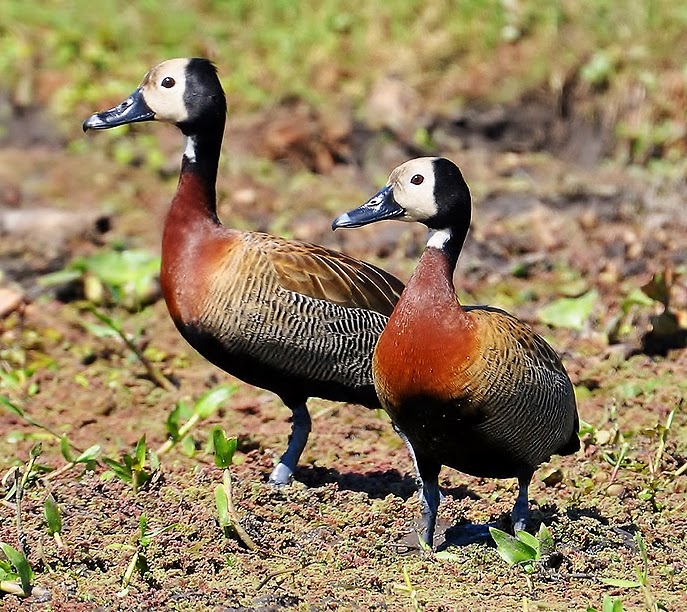 |
| Photo by Cláudio Timm (Flickr) |
Common name:
white-faced whistling-duck (en); irerê (pt); dendrocygne veuf (fr); suirirí cariblanco (es); witwenpfeifgans (de)
Taxonomy:
Order Anseriformes
Family Anatidae
Range:
This species is found throughout sub-Saharan Africa, including Madagascar, and also in South America, east of the Andes, from northern Venezuela and Colombia down to northern Argentina.
Size:
These birds are 38-48 cm long and weigh 500-820 g.
Habitat:
The white-faced whistling-duck is found in various freshwater wetlands, including lakes, swamps, marshes, large rivers, floodplains and also man-made habitats such as rice fields, reservoirs and sewage farms, favouring areas with dense emergent vegetation. They are present from sea level up to an altitude of 1.000 m.
Diet:
They feed on grasses, seeds of aquatic plants, rice, pondweed, tubers, and also some aquatic invertebrates such as molluscs, crustaceans and insects.
Breeding:
White-faced whistling-ducks usually breed in the local rainy season. They are monogamous and can nest in solitary pairs, small groups or loose colonies. Each pair nests on a shallow depression in the ground, placed amongst long grass or reedbeds and very close to water. The female lays 4-13 days, which are incubated for 26-28 days. The chicks fledge 8 weeks after hatching.
Conservation:
IUCN status – LC (Least Concern)
This species has an extremely large breeding range and the global population is estimated at 1,7-2,8 million individuals. The overall population trend in increasing although some populations are decreasing.







